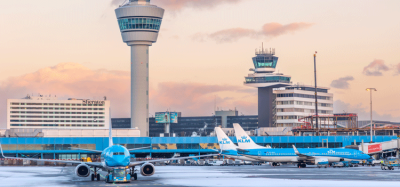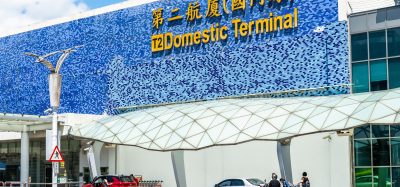ACI EUROPE: Airports need to future-proof
Posted: 9 July 2024 | Emily Budgen | No comments yet
At the 34th ACI EUROPE Annual Congress, held in Istanbul last week, Olivier Jankovec advised that airports need to ‘future-proof.’


Olivier Jankovec, addressing the new normal experienced by European airports, as well as the key financial and operational challenges ahead in the State of the Industry address at the 34th ACI EUROPE Annual Congress, stressing the need for future-proofing. This was contextualised with the industry’s continued traffic resilience, structural aviation market changes and geopolitical tensions, as well as the need for more sustainable innovations and measures.
New market reality
Even though the latest traffic data demonstrates a surpassing of passenger volumes across the European airport network compared to 2019 levels1, and the peak summer months promise to be the busiest season2, there are still wide performance gaps amongst national and individual airport markets.
Join us live: Shaping the Next Generation of Hold Baggage and Air Cargo Screening
Join us live for an insightful webinar on 11th December at 14:00 GMT, in collaboration with Smiths Detection, as we explore the strategic balance of operational efficiency, regulatory compliance, and sustainability in high-volume security environments.
This session offers a focused look into future-proofing your security strategy.
Key learning points
- Cost Reduction: Strategies to minimize bag travel time while simultaneously reducing operational costs.
- Regulatory Roadmap: Insights into the next wave of regulatory changes and their impact on future investment decisions.
- Sustainable Systems: Practical approaches to building sustainability into security systems and lowering the total cost of ownership (TCO).
- Scalable Solutions: Real-world examples of scalable systems supporting current airport growth and preparing for tomorrow.
Register now for expert insights, case studies, and actionable strategies on operational efficiency!
While there are some airports which are within fast-growing aviation markets, such as Albania, Uzbekistan and Armenia, that have seen an exponential growth in passenger traffic and tourism, as well as some VFR-dependent EU markets, such as Greece, Poland and Portugal, which have also seen an increase above their pre-pandemic volumes, there are still some airports, such as those in Finland, Germany, Sweden, the Czech Republic and Israel, that are below such volumes.
Jankovec said: “There is no question we live in a whole new world. Geopolitical tensions, the primacy of leisure & VFR demand coupled with Ultra Low-Cost Carriers’ continued expansion and Full-Service Carriers focusing on their hubs and consolidating — all these factors are shaping airports’ fortunes, resulting in heightened competitive pressures. While our headline figures tell the story of passenger traffic finally surpassing 2019 levels — not even half of Europe’s airports (47%) have actually fully recovered their pre‑pandemic volumes.”
Revenue imbalances & investment squeeze
These competitive pressures are very much shaping airports’ finances. If 2023 saw Europe’s airports posting a much-needed net profit of €8 billion, this remains below what was achieved back in 2019.
This result was mainly driven by non-aeronautical revenues4 increasing by +17% when compared to 2019, rather than user charges paid by airlines — which only yielded a +2% increase in aeronautical revenues. Meanwhile, airfares charged by airlines for intra‑European travel are up by +37% this month when compared to 20195.
Against that background, Jankovec warned about the risk of an airport investment squeeze for Europe: “Many airports had to pause investments in the wake of the pandemic. They now need to catch up to boost operational resilience, drive decarbonisation forward, keep digitalising and also increase capacity where required. And with inflation having pushed airports’ operating costs to record levels and the debt accumulated since COVID still standing at €130 billion, there is simply no way around relying more on the ‘user pays’ principle. This means airport charges cannot be frozen or let alone decrease — but that they will need to increase to sustain the estimated €360 billion in Europe’s airports investment needs by 2040.”
Red card to regulators
That reality has yet to sink in with the way airports are regulated in some countries, where the interests of airlines, rather than those of the travelling public, communities and the planet, remain the guiding light. Reviewing recent decisions on airport charges, Jankovec gave a red card to:
- The Irish Aviation Authority for its decision on airport charges at Dublin airport — which is based on the interest of just one dominant airline rather than consumer interest.
- The French regulatory system, which is based on a systematic downward pressure on charges irrespective of actual costs for airports.
Decoupling financial viability from volume growth
Looking ahead, Jankovec further stressed the importance of the ‘user pays’ principle in the context of climate action and capacity limitations — outlining a key future-proofing challenge for airports as part of their continued business transformation: “Europe’s ambitious decarbonisation policies will increase the cost of flying, which will inevitably impact demand. Coupled with the capacity constraints faced by many airports, this presents a unique challenge as our economic model remains largely dependent on continued volume growth. This means we will need to decouple our financial viability from this growth logic — which in turn will require achieving growth in unit revenues.”
He added: “Increasing unit revenues to reflect the impact of climate policies is precisely what airlines are themselves starting to do, as shown by Lufthansa’s decision to add an ‘Environmental Cost Surcharge’ to all its airfares as of next year6.”
Becoming the masters of our own capacity
Financial challenges and capacity limitations are also putting the spotlight on the need to increase operational efficiency and resilience — with a renewed focus on the passenger experience.
With airports too often not being in full control of the way their facilities and capacity are being used, Jankovec pointed to the need for them to become the masters of their own capacity and performance: “Operating an airport is akin to running a factory in which you have invested, but without being able to effectively control its throughput and performance — since both are heavily dependent on others, from airlines and ANSPs to ground handlers and Border Control. This needs to change as the ramifications extend well beyond our own finances. This is also about environmental efficiency, connectivity and service quality.”
Jankovec pointed to digitalisation and in particular AI and Machine Learning as key enablers in breaking these operational silos through data access and integration — with airports now driving transformative agendas through their own Innovation Labs. He also urged for airport slot rules to be reformed both in the EU and the UK — a call on which Armando Brunini, President of ACI EUROPE and CEO of SEA Milan Airports further elaborated in the keynote interview alongside Herald Ruijters, Deputy Director General of the Directorate for Mobility & Transport at the European Commission, during the 34th ACI EUROPE Annual Congress & General Assembly in Istanbul.
1 Passenger traffic between January and May 2024 across the European airport network stood at +0.2% compared to the same period in 2019. While Q1 remained below pre-pandemic levels (‑1.3%), Q2 has so far seen the gap closing with month of May at +4.5% (source: ACI EUROPE)
2 Seat capacity by airlines from European airports this Summer currently stands at +0.8% above pre-pandemic levels (source: RDC).
3 Visiting Friends and Relatives
4 This comprises revenues from retail, Food & Beverage, parking, advertising and car rental concessions.
5 RDC APEX Fares Database
6 https://go.aci-europe.org/e/1036123/g-environmental-cost-surcharge/5vr985/456651943/h/V3Eb4fEUAJEb-hS_Tr9xvc5blYFbCfOFaXLmXQyx7ZY
More Like This
IATA: Passenger demand up 10.7% in May
International Airport Summit 2024 launches in Amsterdam!
Edmonton International Airport (YEG) hosts music festival
Join our free webinar: Beyond silos: How ecosystem thinking elevates the airport experience
In today’s complex aviation landscape, airports are moving beyond siloed operations to embrace a new era of collaboration. This webinar focuses on how leading airports are using ecosystem thinking to adapt, personalize, and continuously improve every touchpoint, boosting both passenger satisfaction and non-aeronautical revenue.
Date: 13 Nov | Time: 10:00 GMT
REGISTER NOW TO SECURE YOUR SPOT
Can’t attend live? No worries – register to receive the recording post-event.
Related topics
Aeronautical revenue, Air traffic control/management (ATC/ATM), Airlines, Airport crisis management, Airport development, Airport leadership, Airspace modernisation, Artificial intelligence (AI), Border control, Conferences and events, New technologies, Non-aeronautical revenue, Operational efficiency, Passenger experience and seamless travel, Passenger volumes, Regulation and Legislation, Sustainability
Related airlines
Related organisations
ACI Europe, SEA Milan Airports, The Irish Aviation Authority


















